
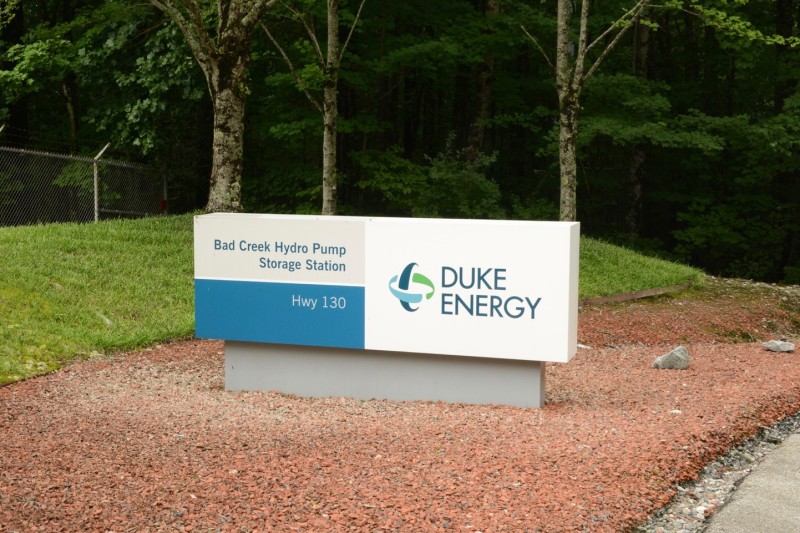
The Bad Creek Pumped Storage Station is part of the Keowee-Toxaway Hydroelectric Project in northwestern South Carolina.
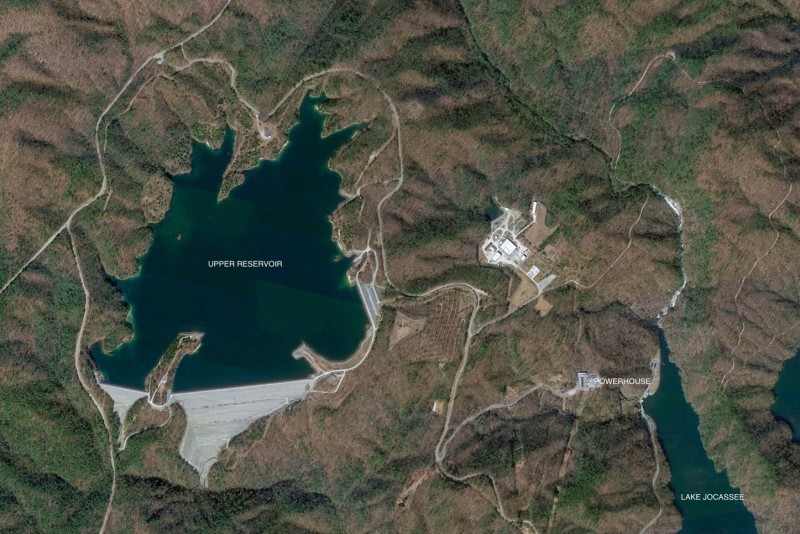
At Bad Creek, water is pumped 1,200 feet from Lake Jocassee to a 370-acre upper storage reservoir.

Four pump/turbines in an underground power station produce 1,065 megawatts for a few hours, when water runs back down to the lake.
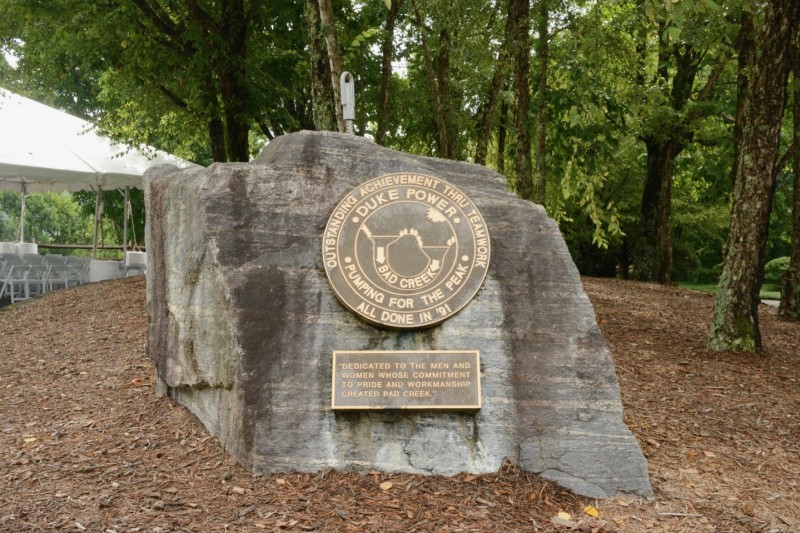
Bad Creek opened in 1991, one of the most recently constructed pumped storage projects in the USA.
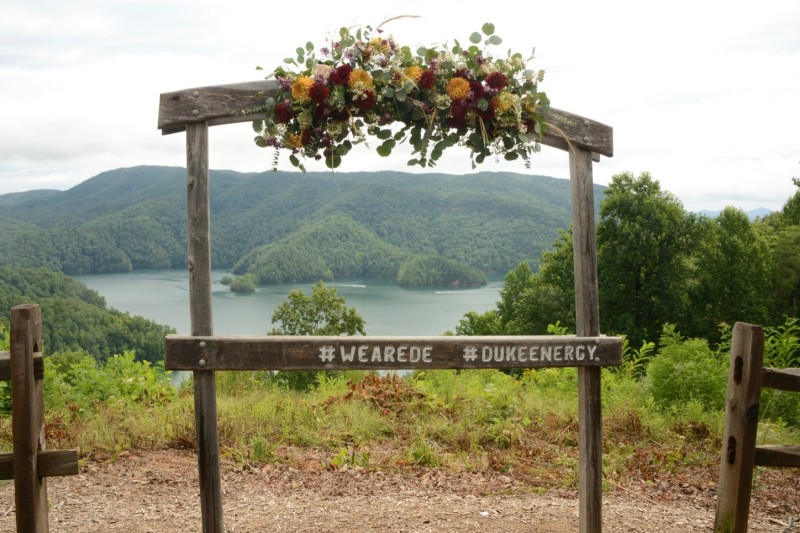
There is an overlook near the storage reservoir, with a scenic view of the lower reservoir, Lake Jocassee.

Otherwise the facilities are off limits to the public.

Lake Jocassee, which covers 7,500 acres, is also a reservoir.
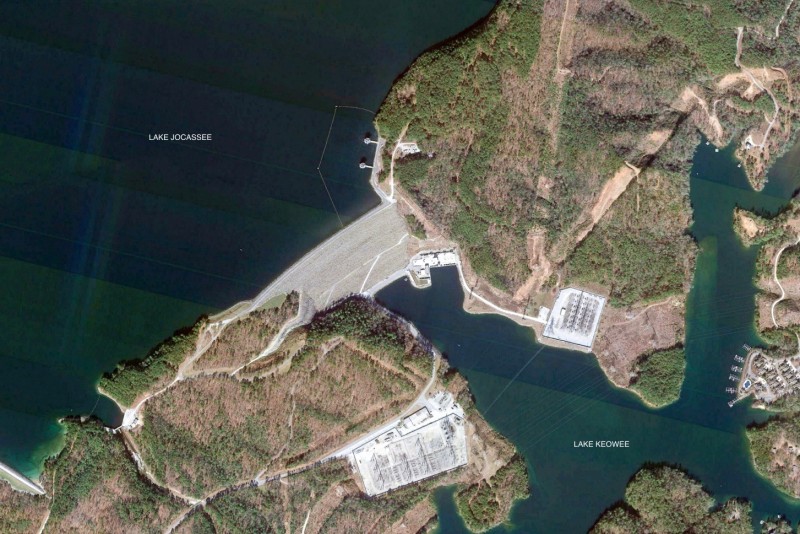
The dam that forms Lake Jocassee also has four pump/turbines in it, which pump water up from Lake Keowee, and generate 774 megawatts of power when it flows back down.
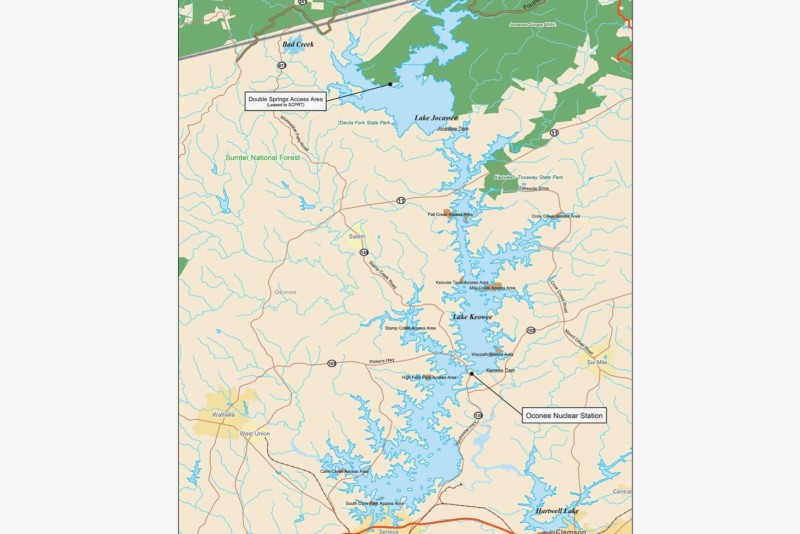
This series of reservoirs, dams, and hydro plants are part of the Keowee-Toxaway Hydroelectric Project, built in the early 1970s, to provide stable cooling water for the Oconee Nuclear Power Plant, as well as backup sources of power.

The Oconee Nuclear Plant is located on the shore of Lake Keowee. It has three reactors, and was the largest nuclear power plant in the world when it opened in 1973.

Duke Energy, the builders and operators of the plant, and the Keowee-Toxaway project, operate a visitor center called World of Energy.
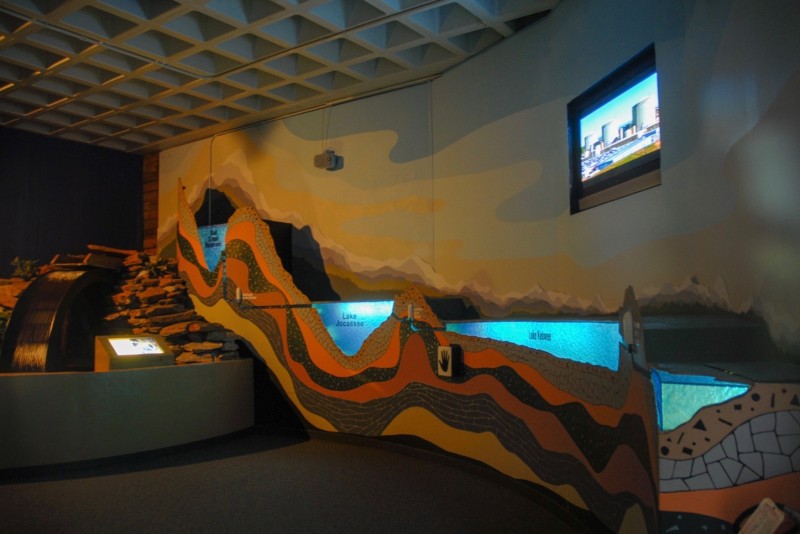
World of Energy opened in 1969, when construction started on the Keowee-Toxaway project. Since then Duke Energy has grown to become one of the largest electrical utilities in the nation, with seven nuclear plants and a dozen large coal-fired plants.
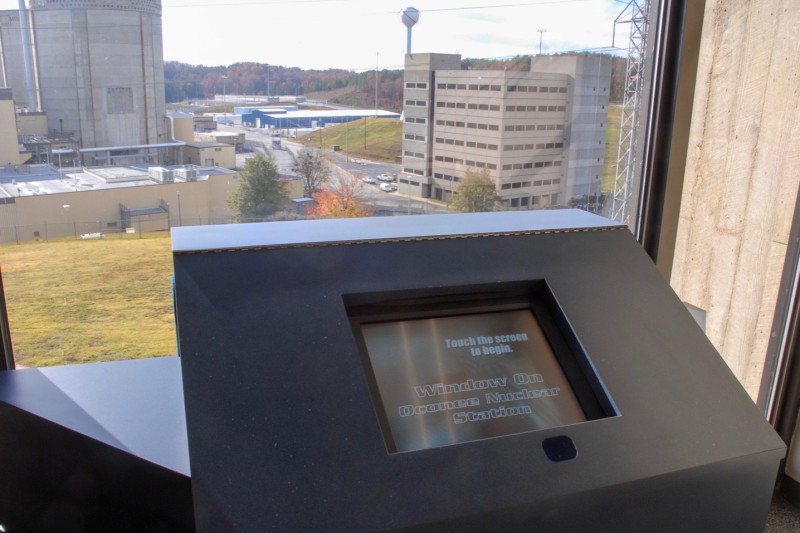
The Keowee-Toxaway project flooded more than 40 square miles of territory.

The flooding of valleys in the region inspired James Dickey to write his novel "Deliverance" which was turned into an influential film in 1971. The opening sequence of the film depicts the construction of Lake Jocassee, and shows the intake towers of the Jocassee Dam, next to the rising waters.
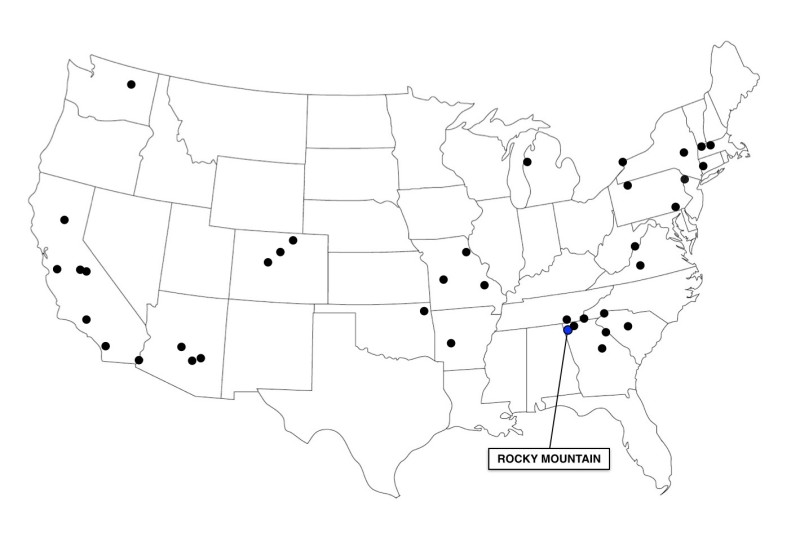

The largest pumped storage facility in Georgia is the Rocky Mountain Hydroelectric Plant, in the southern Appalachian Mountains, in the northwest corner of the state.

The project consists of an oblong upper reservoir constructed near the top of Rocky Mountain and a lower reservoir with a power plant, containing three pump/turbines, capable of producing 385 megawatts each.
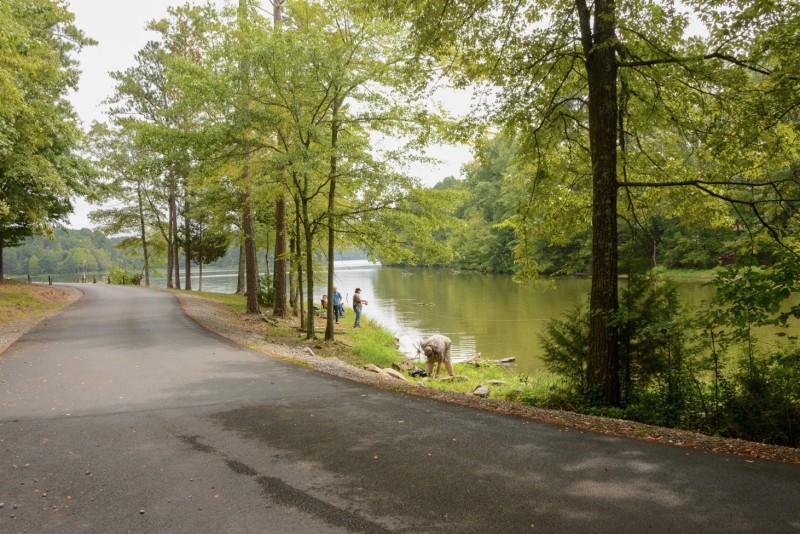
The lower reservoir and the land around it offers fee-based recreational activities, such as camping, boating, hunting, and fishing.

These activities are mostly contained within two auxiliary ponds, keeping people away from the lower reservoir, where the powerhouse is.

Much of the 5,000 acres owned by the utility company, Oglethorpe Power, is off limits to the public.

Next to a public parking area is a reversible Francis-type runner, the impeller/turbine of the type used in most of the pumped storage facilities in the USA (and on display outside many of them too).
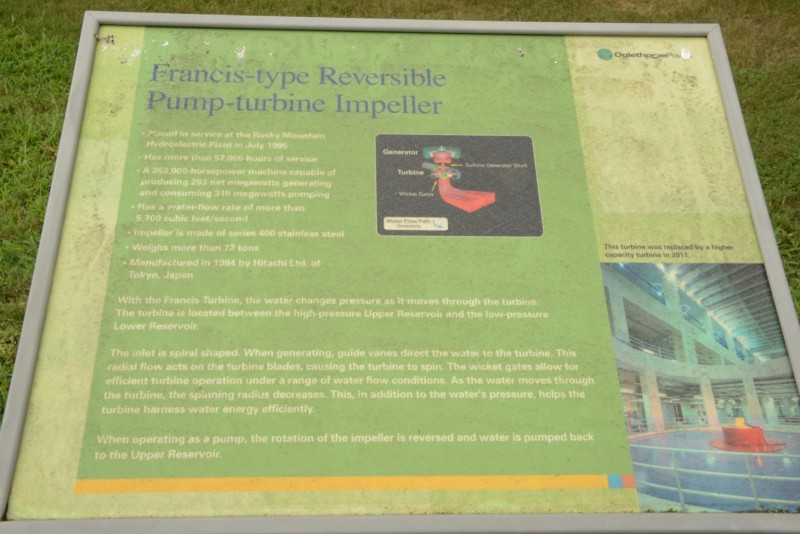
A plaque describes its function. When installed, it is contained in a pipe, atop a motor/generator, and spins one way to pump, and the other way to generate power.
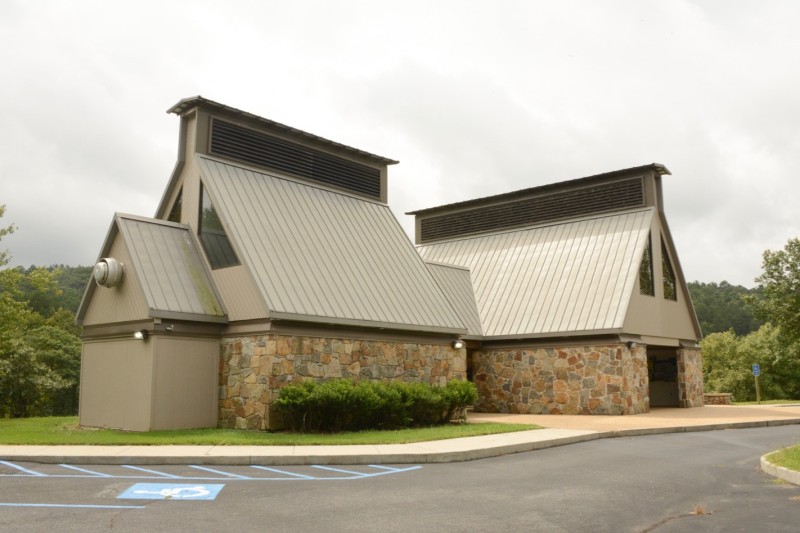
Also on site is an unmanned visitor pavilion.

Under its canopy are panels that describe characteristics of the facility, as well as the recreational opportunities on its grounds.
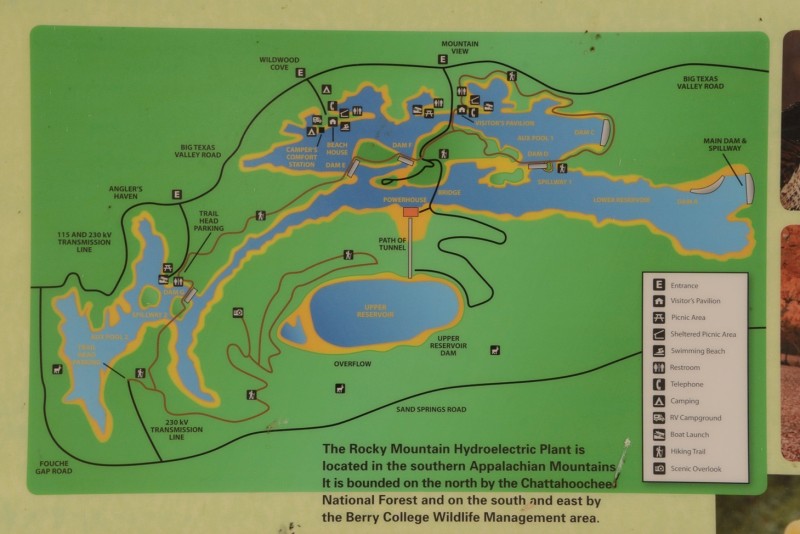
A chart shows the layout, and lower reservoirs.

An image depicts the upper reservoir.

A panel shows a simple cross section of the penstocks within the mountain.

And another shows the power plant.
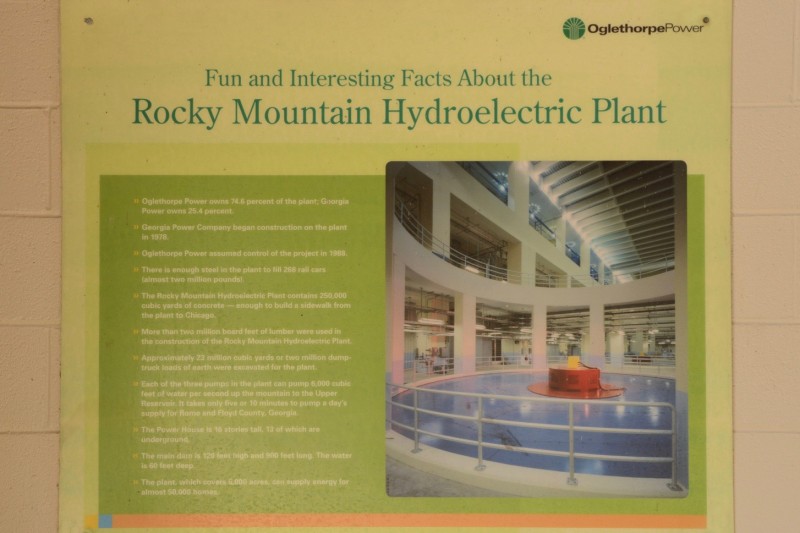
Construction of the project started in 1977, but stopped in the 1980s, due to financing issues. It was finally finished and opened in 1995, after a total cost of more than $1 billion.
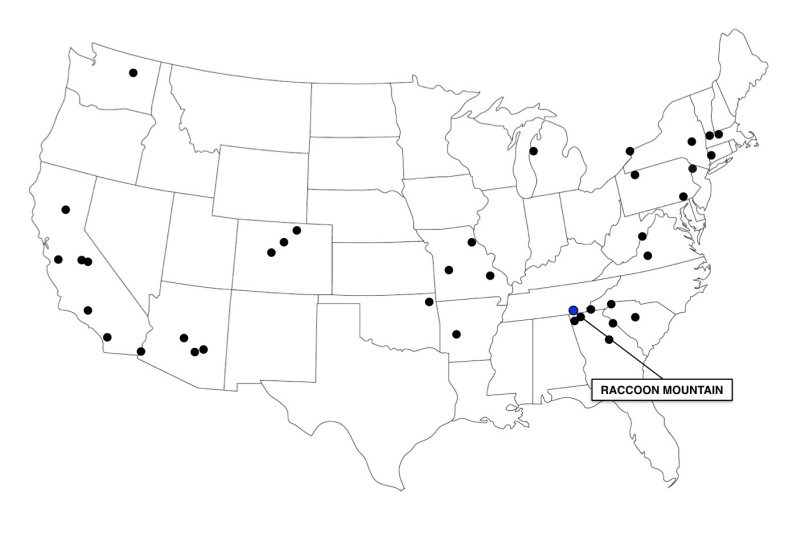

Six miles west of Chattanooga, Tennessee, is the Raccoon Mountain Pumped Storage Project, built and operated by the TVA. It is the third largest pumped storage project in the nation.

The project includes a large upper storage reservoir, an underground powerhouse, and a lower reservoir on a dammed segment of the Tennessee River. It is the largest hydroelectric plant built by the Tennessee Valley Authority (TVA), which is saying alot, as the TVA has 30 of them, and was a pioneer in large-scale dam construction.
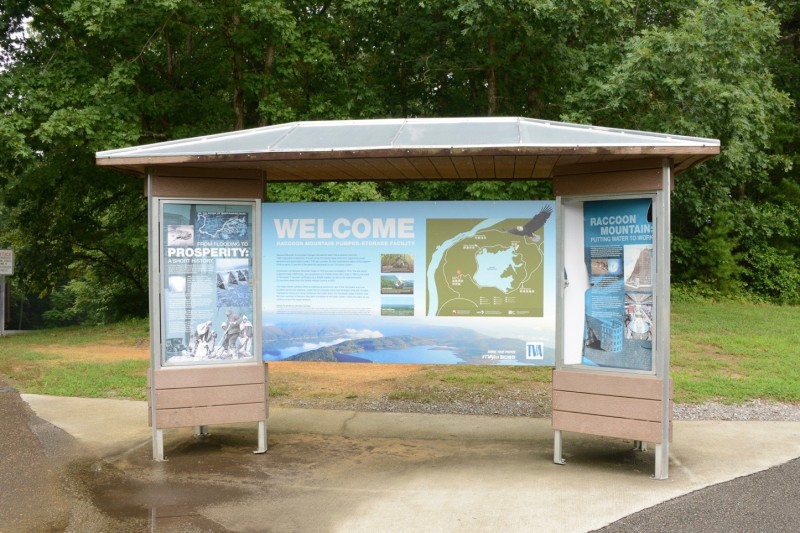
The TVA is part of the federal government, and the grounds of the operation are welcoming and more open to the public than most.

Visitors can circle the upper reservoir by car, and access many biking and hiking trails.
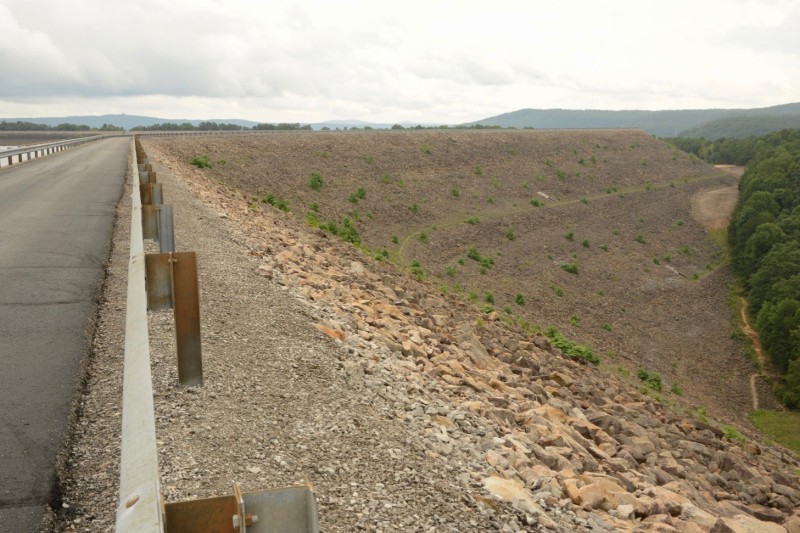
The dam containing the upper reservoir is 280 feet high and a mile and a half long–the largest earthen dam built by the TVA.
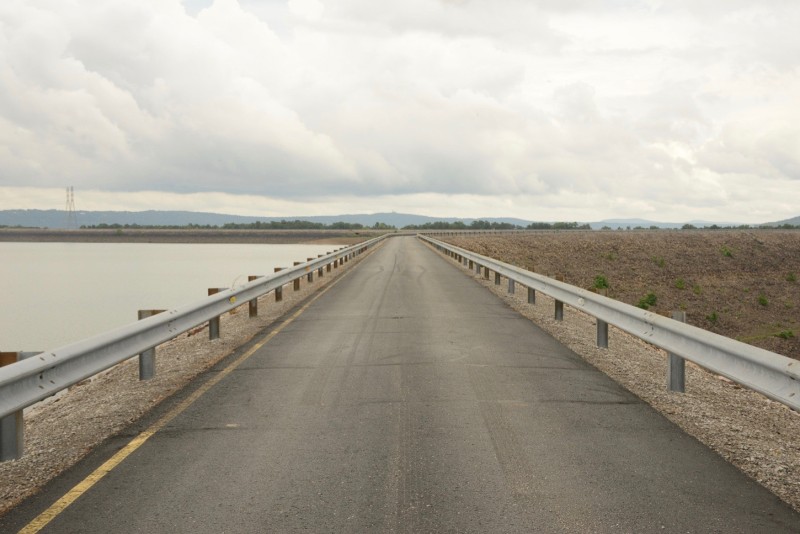
Visitors can traverse its length.

There is an overlook providing a view of the intake structure in the upper reservoir,
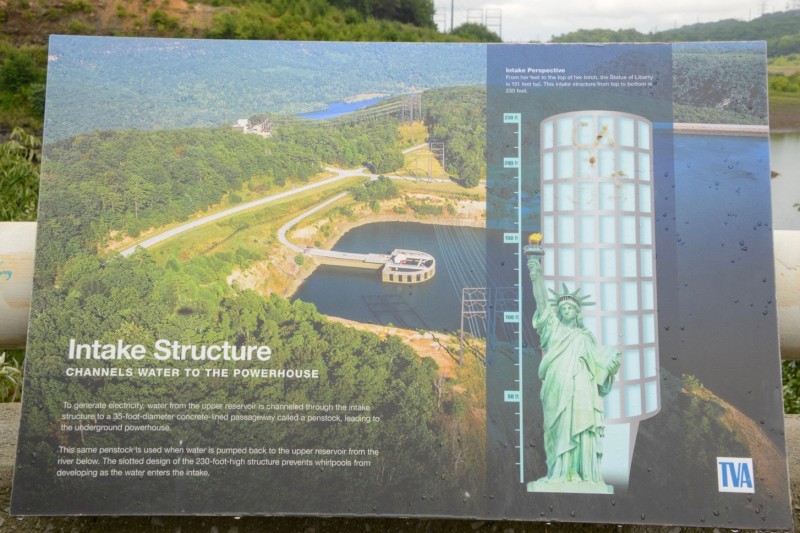
with an interpretive plaque that describes what lies beneath, and puts things in perspective.
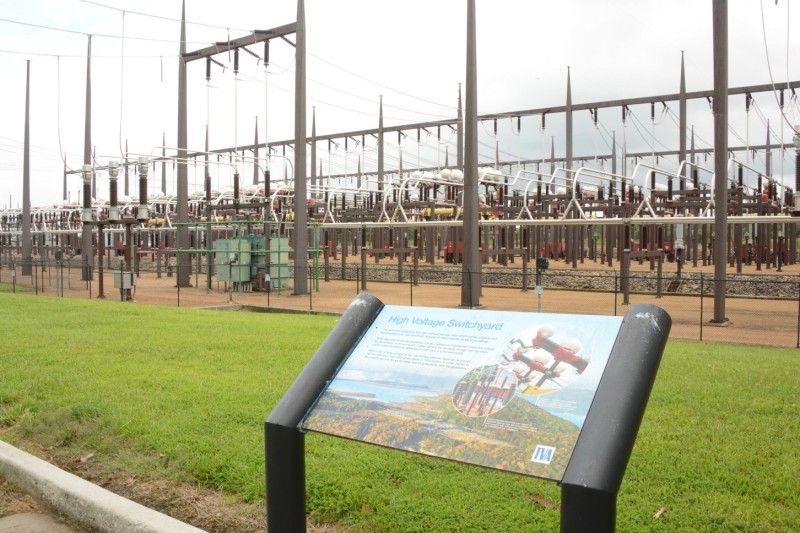
The electrical substation for the facility even has an interpretive plaque.
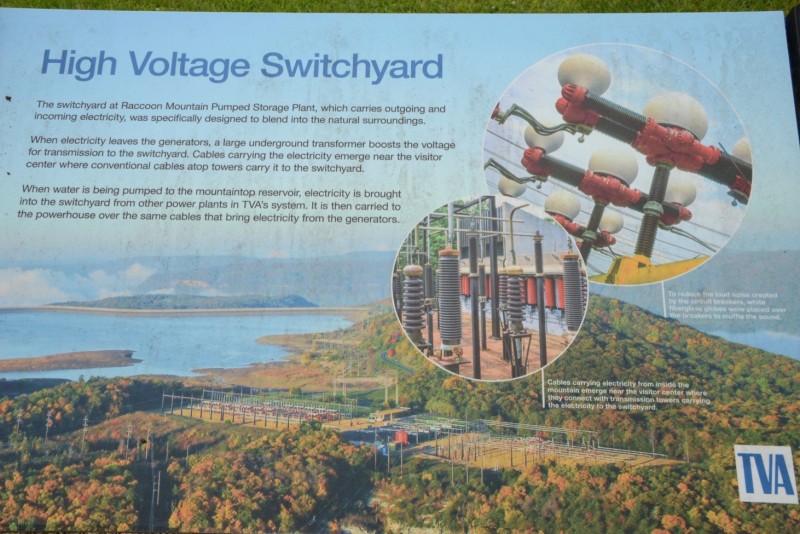
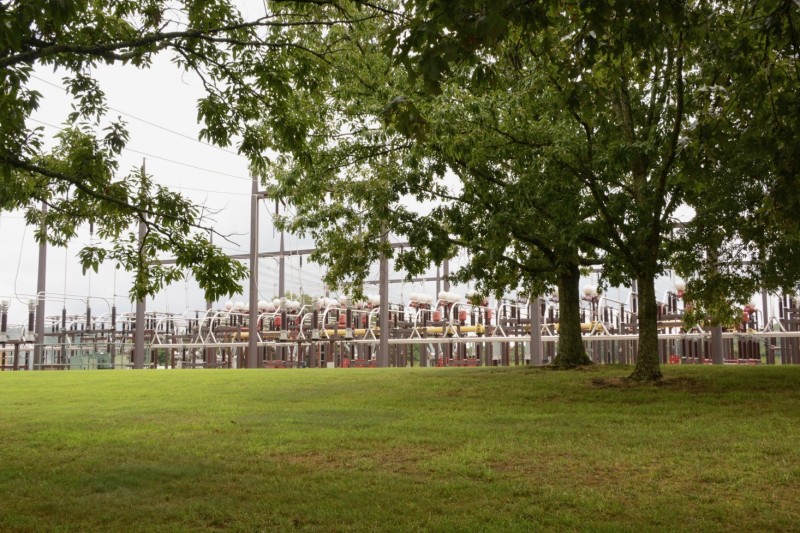
It is one of the few electrical substations designed with aesthetic considerations, to be part of a park.
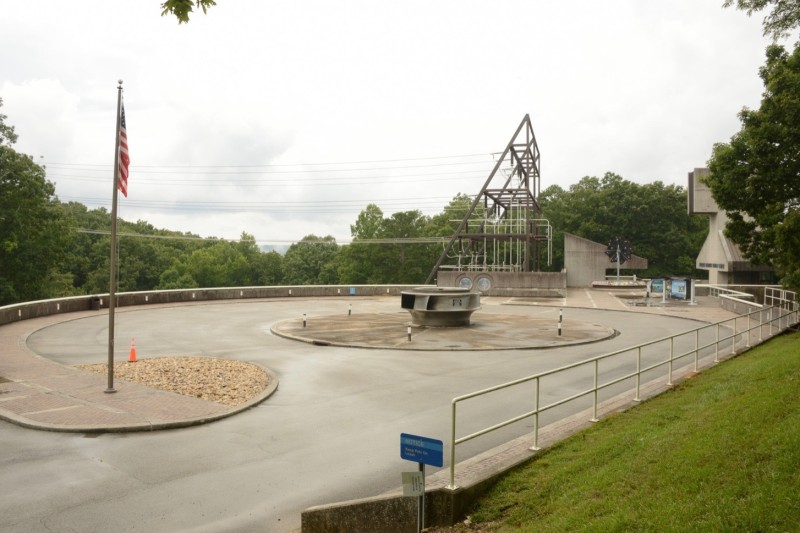
The lines carrying the electricity consumed and produced by the underground powerhouse emerge next to the visitor center.

The dramatic brutalist visitor center has informative displays inside and out.
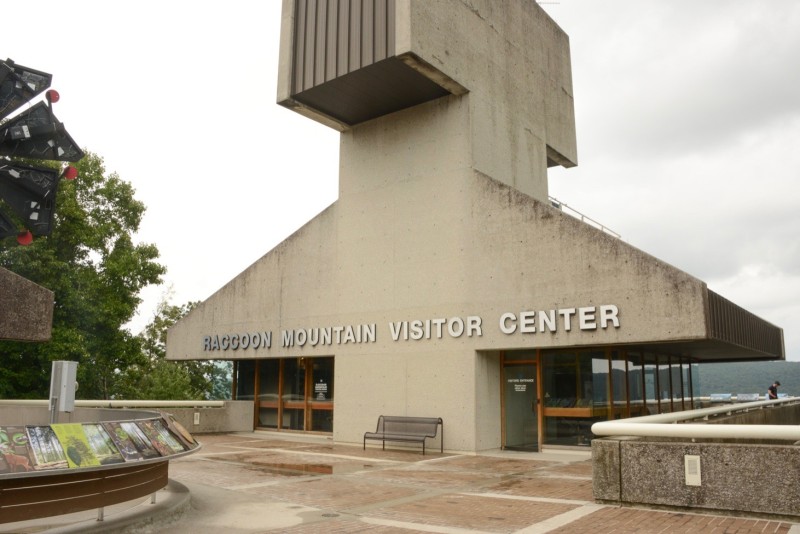
The center of the building is the top of a vertical utility corridor and an elevator shaft, connecting to the powerhouse more than a thousand feet below, giving the visitor center its unusual shape.

The visitor center structure is an integral part of the entire pumped storage project, which was built between 1970 and 1979.
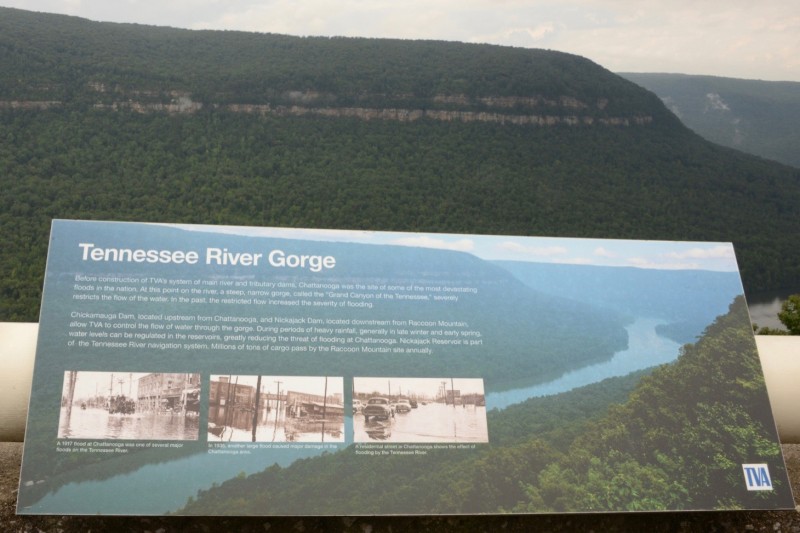
The balcony overlooks the Tennessee River Gorge and Nickajack Lake, the dammed segment of the river that serves as the lower reservoir for the project.
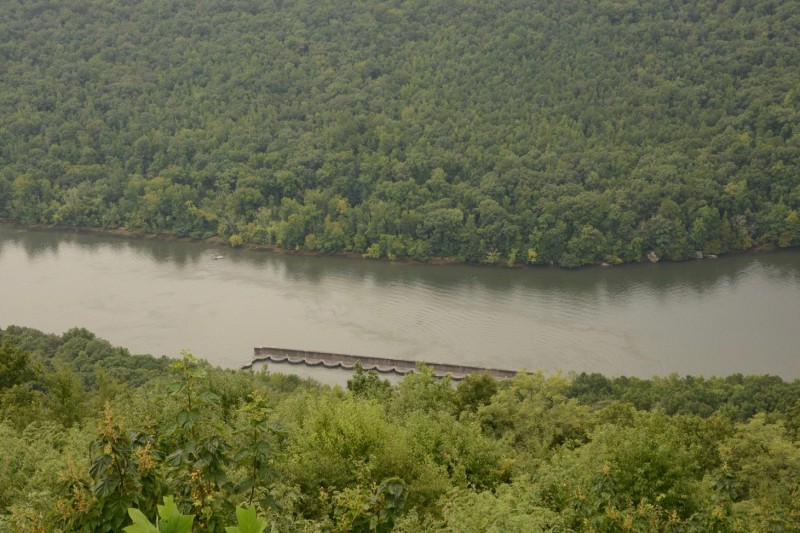
Some of the structures of the outfall on the lower reservoir are visible directly below.

These structures are deflector cells, built opposite the intake/discharge tunnel to reduce the velocity of water leaving and entering the tunnel, and to keep boats from getting too close.

Water flowing down from the upper reservoir can generate power for 22 hours.

It takes 28 hours to pump it back up to fill the reservoir.
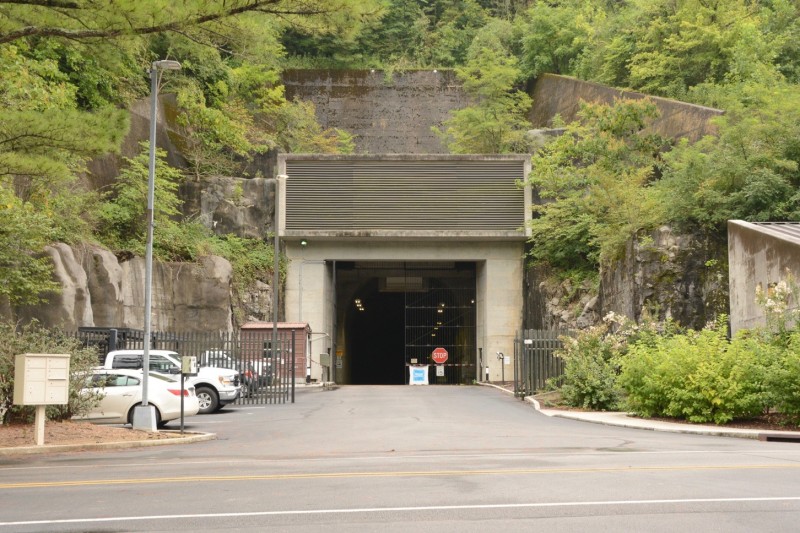
A portal next to the intake/outfall tunnel serves as a service entrance leading to the power plant inside the mountain, where four pump/turbines each generate as much as 413 megawatts.
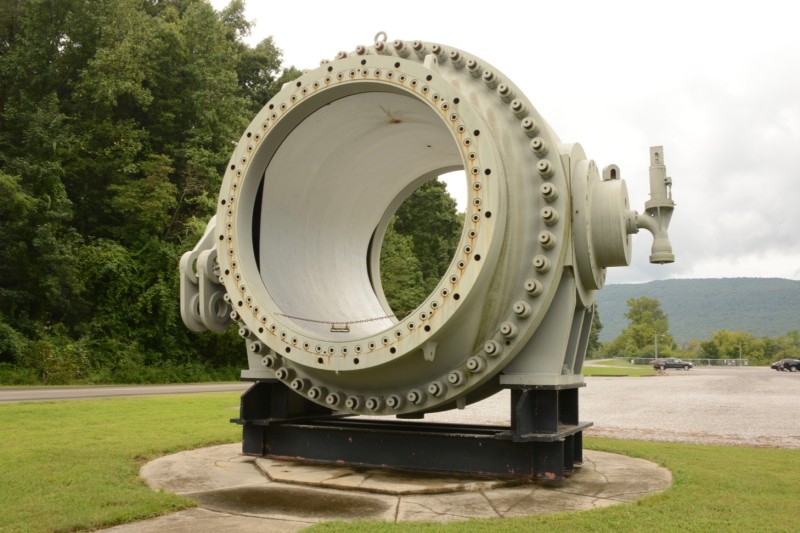
The public is encouraged to visit, picnic, and fish outside the facility, and enjoy the sculptural structures there.

The TVA was established in 1933, as part of the New Deal, and was the largest regional development project in the nation’s history. It is still the largest public utility in the country, with dozens of power plants, transformed waterways, and transmission lines covering several southern states.
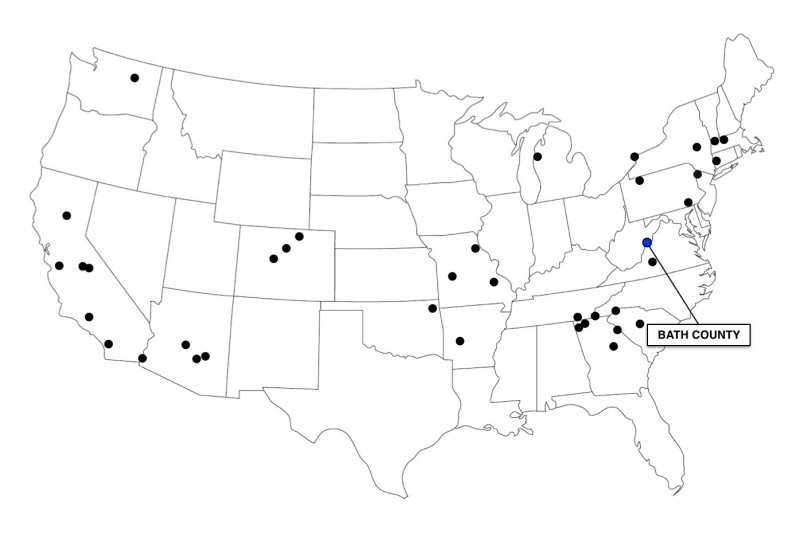

The largest pumped storage facility in the nation is the Bath County Pumped Storage Station in the Allegheny Mountains, on the state line between Virginia and West Virginia.

It has a constructed 265-acre upper reservoir, with a power station on a lower 550-acre reservoir on a dammed creek. The footprint and structure are typical and belie its scale.

The difference is inside the power plant, on the shore of the lower reservoir, which has six pump/turbines, each with a capacity exceeding 500 megawatts, more than twice the typical size.
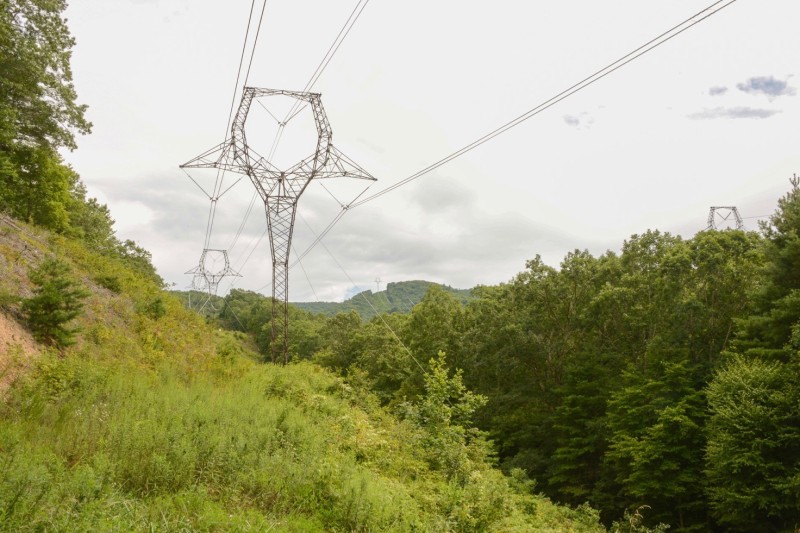
The upper reservoir is 1,200 feet above the power station, and its water level sinks 100 feet over the ten hours it takes to drain through the turbines into the lower reservoir. It takes 11 hours to pump the water back up. The plant is 80% efficient, meaning 20% more power is used to pump the water back up.

Construction started in the late 1970s, and the plant opened in 1985, costing more than four billion in today’s dollars. It was the largest pumped storage facility in the world until 2021, when a 3,600-megawatt plant opened in China.

With an output of 3,003 megawatts, it is the tenth largest electrical generating station in the USA, of any kind.
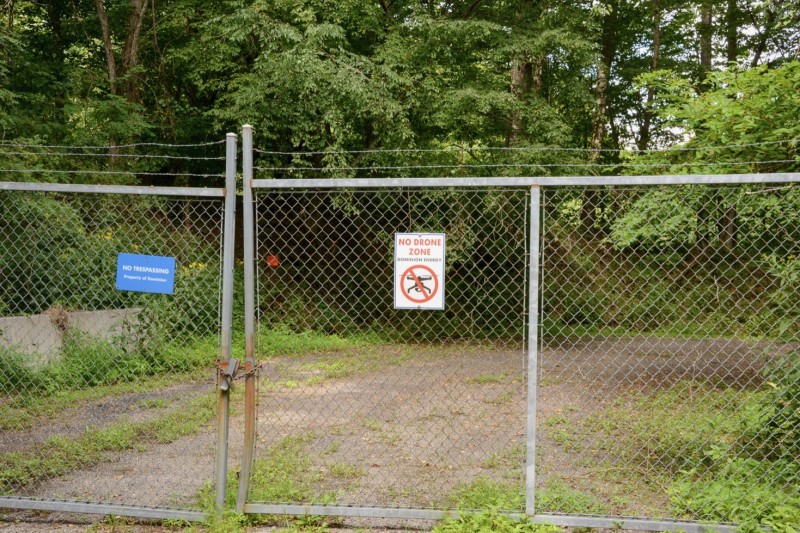
Access to the upper and lower reservoirs is restricted.

Information about it onsite is limited to a small kiosk outside the security station at its main entrance.

The tattered site map indicates a visitor center on the property, which closed long ago.
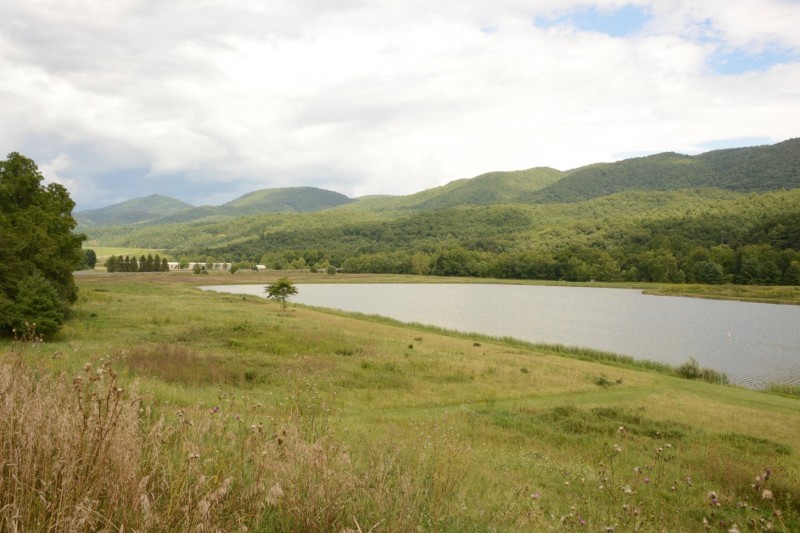
Two ponds were constructed below the main reservoir, to provide recreation for the public, as required by the plant’s construction and operating permit.
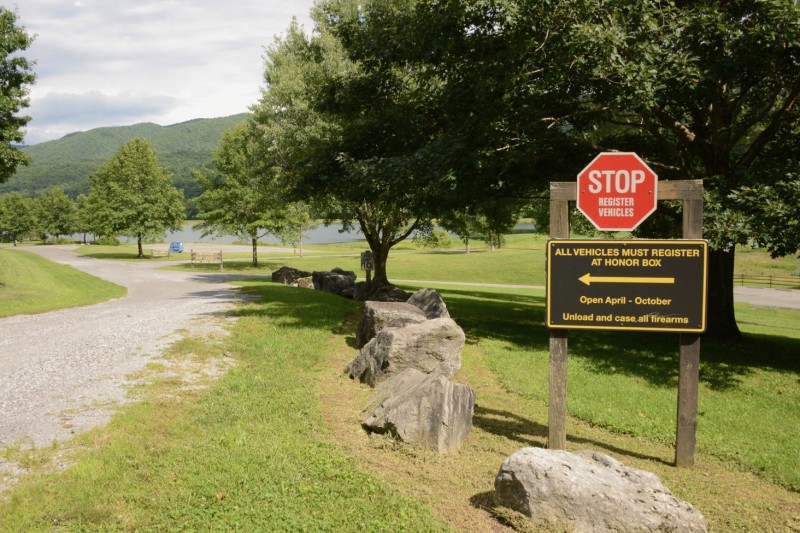
Camping and fishing is encouraged, though it requires a small fee.

Its majority owner is Dominion Energy, a large utility based in Richmond, Virginia, with power plants and gas pipelines in the south, midwest, and western states.
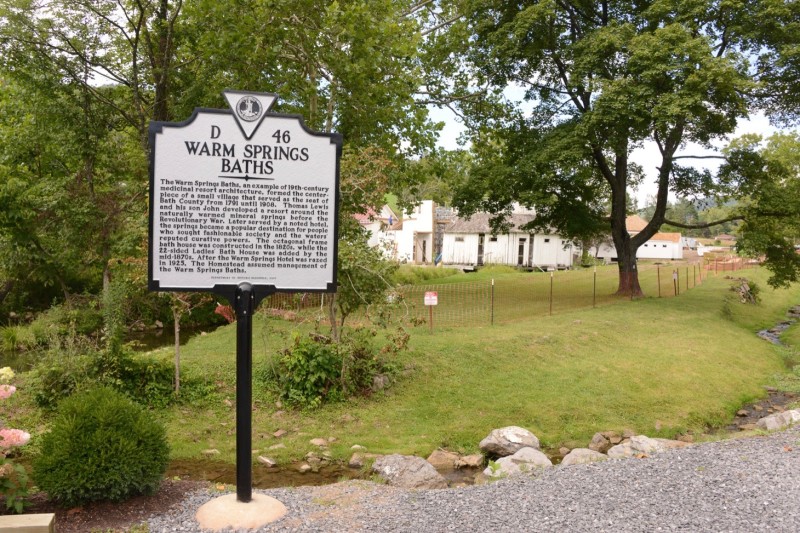
The facility’s name comes from it being in Bath County, a part of Virginia known for its springs, which were popular in the 19th century, and were the local industry for a number of towns in the region.
